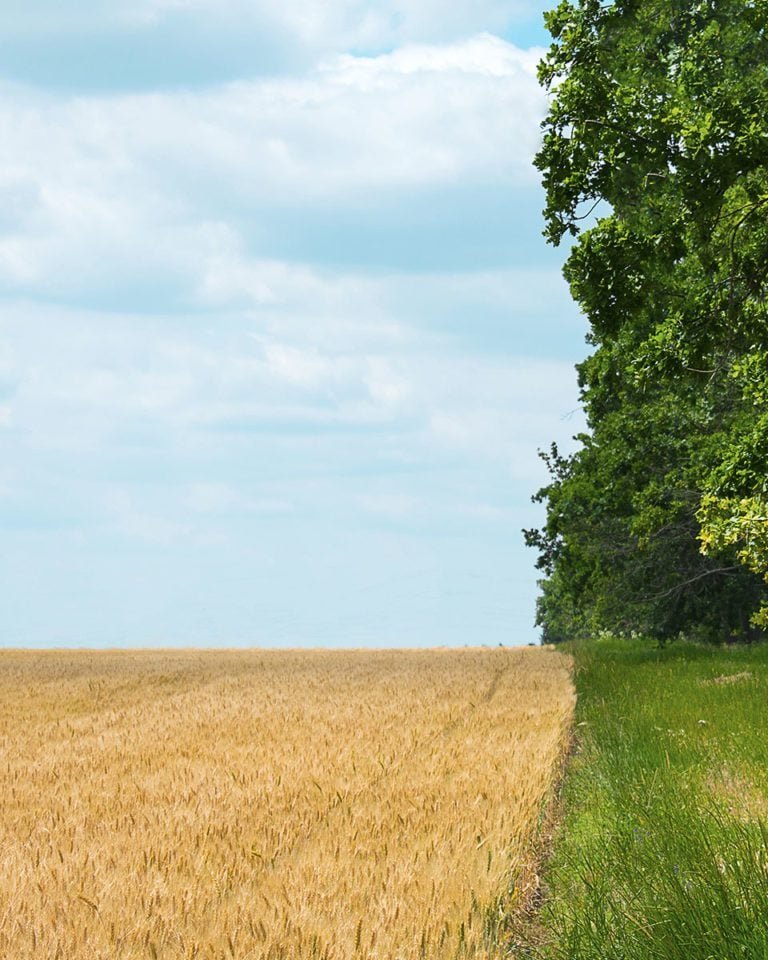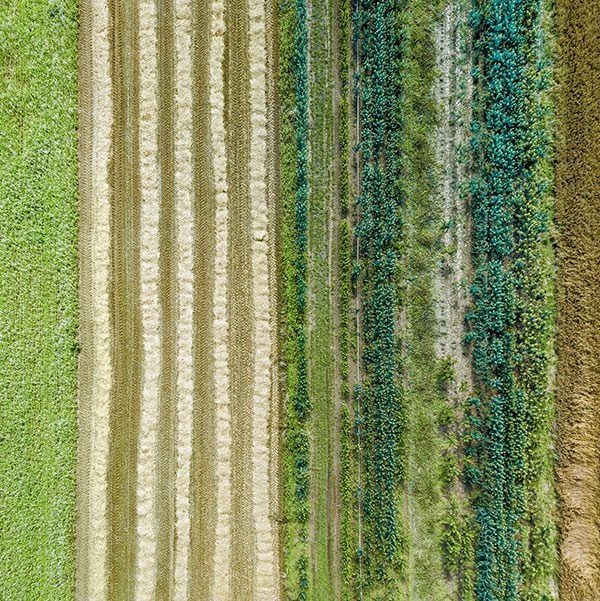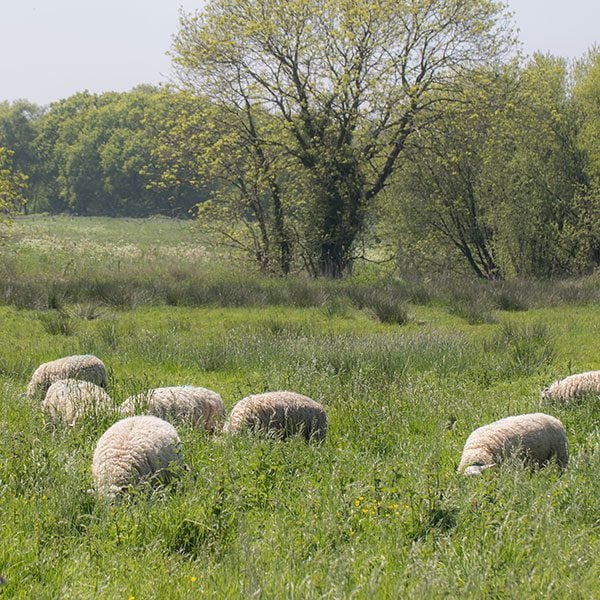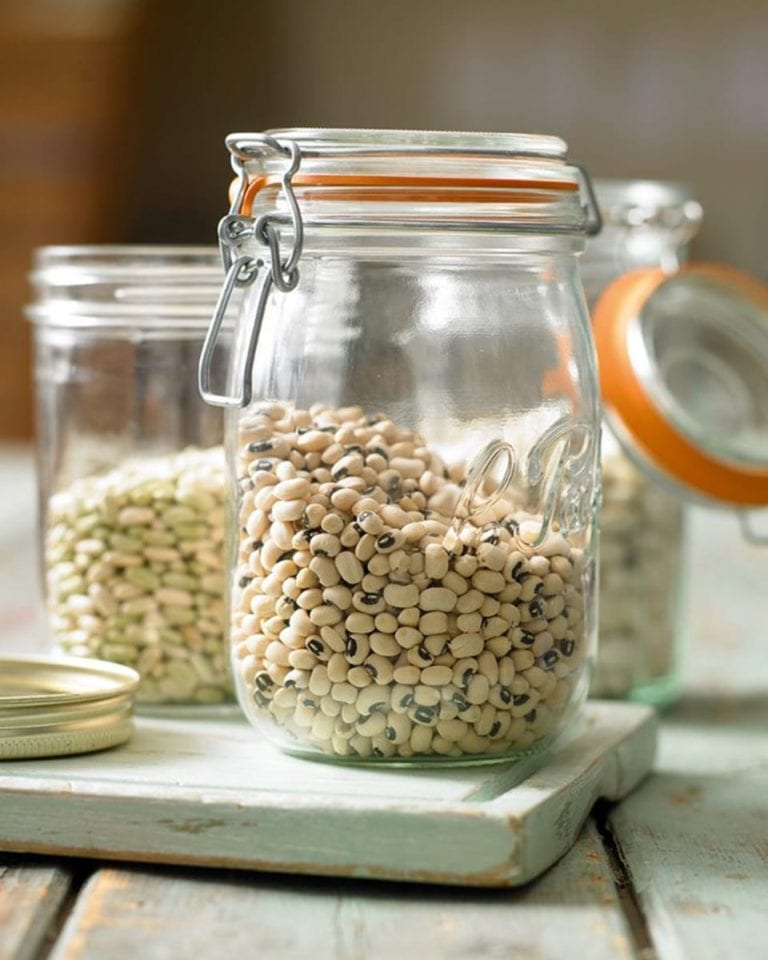Farming shouldn’t cost the Earth. What is regenerative farming?
Mobs, mulch and microbes: the regenerative farming movement could change the way our food is produced for the better – but what’s it all about? Ashleigh Arnott investigates this hope for the future of food in the UK.
When it comes to food production, so the argument goes, sustainable just isn’t enough. Our current farming system has been run into the ground and it needs to be improved rather than maintained and sustained. From World War II onwards, farmers began to rely on heavy machinery and chemicals to increase their yields. It worked, of course, but the soil paid the price – its nutrients were depleted, its protective shrubs and trees were cleared, its friendly microbes, fungi and minibeasts moved out to escape the constant disruption. In the UK. the costs of topsoil erosion are thought to be £1.2 billion per year. Regenerative farming aims to rehabilitate and conserve the land used to grow food.

Many farmers are now faced with flavourless crops and huge bills for fertilisers, making their livelihood a loss-making pursuit. They’re looking for another way – which is where regenerative agriculture comes in. The movement doesn’t have an official definition, but if a farmer is growing/producing food – plants or animals – with a view to conserving and rehabilitating the land (and in particular the soil), they’re practising regenerative farming.
What on earth could regenerate a farm?
Jo Facer and Erin Bunting run a smallholding just south of Belfast using regenerative farming practices. “We aim to create a resilient, diverse, balanced ecosystem that we and the food we grow can thrive in,” explains Jo. “Rather than using pesticides, we rely on creating ecological balance and healthy happy soil to produce healthy plants. Rather than herbicides we weed by hand or use light exclusion (big sheets of black plastic or a thick layer of mulch) to control weeds. We practise no-till or no-dig growing, with the primary aim of minimising soil disturbance, protecting and feeding our ecosystem of soil organisms, who in turn look after our plants.”
As well as delicious produce, they have grown a local community of people who subscribe to their veg boxes and also help out on the farm, coming together regularly to share meals – their own food system that’s at once delightfully old-fashioned and refreshingly forward-thinking. As Erin puts it, “By bringing people to the land to see how food is produced – the effort it takes but also the absolute joy of pulling that first ripe tomato off the vine – you can change their relationship with food and how they value it forever. That’s amazing and heartening and gives me a lot of hope for the future.”
Sounds good for the planet too, right?
There are high hopes for the effect these regenerative farming systems might have on our carbon emissions. Organic dairy producer Yeo Valley in Somerset started a Regenerative Organic Farming Project in 2018 that has since recorded the carbon stock not only in its own 2,000 acres but also 16,000 acres from its supply chain across the country.
Project Manager Tom White explains that the farm started with carbon measurements because “it’s quite a good indicator that the life in the soil is going in the right direction. Land management potentially has some really amazing contributions to climate change, human health, biodiversity and air and water quality, and farmers are the only ones who hold the keys”.
Data collection on this scale is expensive, but Yeo Valley hopes to see onward positive results that could change the future of farming: “We think it will impact carbon emissions to have deeper rooting plants, different flowering species and different functional species, and we’re a long way from being able to make a claim but you could certainly affect the nutrient density of the food that comes out at the top of the system.” By implementing changes on its own farm and passing on the results and knowledge to the farmers who supply it, Yeo Valley is making regenerative methods much more accessible.
How do these methods take root?
If you want plants – and the animals that survive on them – to grow up strong and happy, the soil they take root in needs to be at peak fitness: an underground health centre that can deliver not just enough water but nutrients, oxygen, microbes, electrodes and plenty more minuscule miracles you’ve probably never realised were under your feet. Biodiversity helps this, and that can be improved by planting many different species or simply allowing room for nature to run its course – and ideally a bit of both. Let the weeds flower and the bugs will come. Most regenerative farms avoid tilling the soil, too, which allows the top soil to dry out and erode more easily.

At Yeo Valley, they’re experimenting with agroforestry, using trees to protect crops, nourish grassland and shelter wildlife. They’re also experimenting with mob grazing – which, as Tom explains, is “trying to mimic the way the bison or the wildebeest graze across the great grasslands of the world. You let the grasses grow very tall to capture lots of sunlight, and their roots grow down very deep. You then hammer them quite hard, the way a wild herd would, before moving off and leaving them for a very long time to recover”.
When soil is at peak fitness, plants and animals can be, too.
How does regenerative farming work with animals?
Mob grazing is a good example of how animals can be an important part of the system. An American study from 2016 found that when regeneratively managed, grazing ruminants (mainly cows, sheep and goats in UK farming) could be carbon negative, as their positive effects on the soil – less erosion, fewer chemicals, better biodiversity – would result in more than enough carbon sequestration to negate the methane they emit.
It’s vast, grassless, meat and dairy megafarms that create those headline-grabbing anti-meat statistics. If humans continue to eat meat in the quantities we do at present those factory farms will continue to exist, but choose quality over quantity and meat and dairy can be part of a sustainable diet.
Farshad Kazemian founded The Ethical Butcher, which sells only regeneratively farmed meat products. “We still visit every supplier in person,” he explains when asked how they make sure their standards are met, though they also look for accreditations from the Soil Association and Pasture for Life. “One of the main factors for me is that the farm is local [to us],” he adds, explaining that he’s wary of the differences in other countries’ standards and, of course, the carbon footprint.
“Why do we have to burn so much fuel? It’s crazy. One of our largest investors refuses to supply us with products because they do not believe London needs to get meat from Cheshire.” Farshad suggests that we can support the movement by simply asking more questions when we go out to eat. “A year ago when we mentioned regenerative agriculture nobody had any idea what we were talking about. It’s becoming a lot easier because chefs are aware of it, and if the consumer asks ‘Where is this beef from? Is it local? Is it from a UK farm?’ the restaurants ask the suppliers the same thing.”
Grazing animals are a positive part of the system when they’re at their most natural.
Farming terminology explained
Agroforestry combines trees and shrubs with crop and livestock farming systems. This might be as simple as planting hedgerows or as complex as silvoarable cropping, where cropping trees (apples, for example) are grown alongside annual harvests in order to protect the soil and support biodiversity while growing an extra product.
Mob grazing is also sometimes called ‘tall grass grazing’; it involves a planned grazing system that moves animals every 1-3 days, allowing for much longer rest periods for the pasture. This improves soil health and water holding capacity, while resulting in healthier livestock and lower costs for farmers.
No-till farming (and no-dig gardening) preserves the soil by disturbing it as little as possible – never ploughing to remove weeds or tilling it before seeding, as had become the norm in farming. This prevents erosion, preserves water and improves soil health.
Cover cropping is often used in conjunction with no-till farming as it’s a natural way to keep weeds from flourishing in fields that are between crops. A cover crop is grown for the benefit of the soil, rather than for cash (or for your plate).

Are the big manufacturers getting onboard?
Due in particular to the positive effects of regenerative farming on carbon emissions, many of the world’s most powerful brands – Unilever, Nestlé, PepsiCo, McDonald’s and Mars for starters – have worked the movement into their marketing plans. It’s good to be wary of greenwashing, but in fact there are some legitimately positive big brand stories in this world. The McDonald’s Farm Forward Program, for instance, included an independent six-year study on more than 200 British and Irish beef farms that showed regenerative methods reduced carbon emissions by 23% and saved the company up to £23,000 per year. The adaptable grazing study that followed won McDonald’s a Sustainable Food and Farming Award in 2021.
Subscribe to our magazine
Food stories, skills and tested recipes, straight to your door... Enjoy 5 issues for just £5 with our special introductory offer.
Subscribe
Unleash your inner chef
Looking for inspiration? Receive the latest recipes with our newsletter


